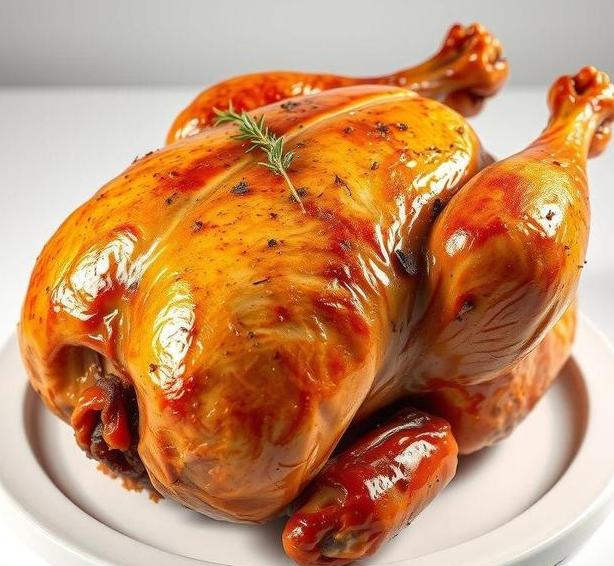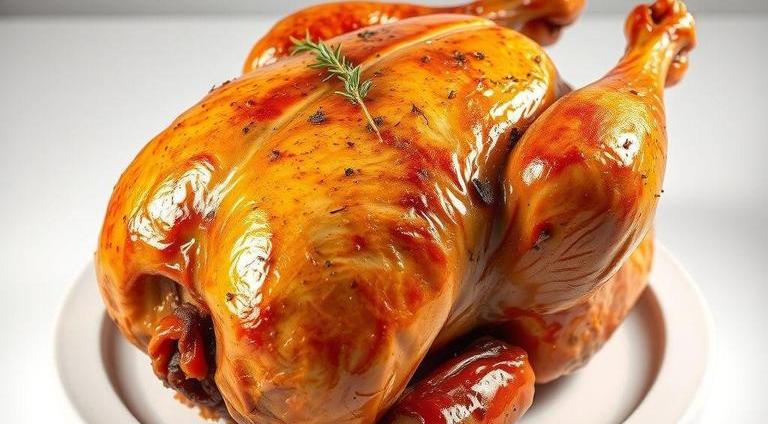When it comes to poultry, one of the most versatile and widely consumed meats, understanding how to properly store and handle a whole chicken is essential for both safety and taste. Whether you’re preparing for a big family dinner, meal prepping, or simply love having a whole chicken in your fridge, knowing how long it stays fresh and how to recognize spoilage is crucial. No one wants to bite into a chicken that’s gone bad, right?
In this guide, we’ll explore everything you need to know about whole chicken, from its shelf life to how to store it properly to avoid any nasty surprises. We’ll dive into how to tell if it’s gone bad, tips on keeping it fresh, and much more to ensure you always serve safe, delicious meals.
Can Whole Chicken Go Bad?
Yes, a whole chicken can absolutely go bad, and it can happen faster than you might think if it’s not stored correctly. Raw poultry, like chicken, is particularly susceptible to bacteria growth, making proper storage crucial. Bacteria such as Salmonella and Campylobacter thrive in raw meat, and improper handling can increase your chances of foodborne illness.
Here are the main factors that can cause a whole chicken to go bad:
- Bacterial Growth: As mentioned, raw chicken is a breeding ground for harmful bacteria, which grow rapidly when left at room temperature or improperly stored.
- Air Exposure: Even when refrigerated, exposure to air can lead to the chicken becoming dried out or even worse, contaminated with harmful microorganisms.
- Moisture Loss: The more moisture your chicken loses, the quicker it will deteriorate. The dry, leathery texture signals a major problem.
So, while it’s not a matter of if whole chicken can go bad but rather when it will go bad-this largely depends on how you store it.
Shelf Life For Whole Chicken

The shelf life of a whole chicken depends on several factors, including whether it’s fresh or frozen, and how it’s stored. Let’s break it down:
Common Signs Of Spoilage
It’s important to know the red flags to watch out for when checking whether your whole chicken has gone bad. These signs of spoilage are usually pretty obvious, but you might have to rely on a few senses (sight, smell, and touch) to be certain:
- Smell: Spoiled chicken will have a distinct, sour, or off-putting smell. Fresh chicken typically has a neutral or slightly faint odor, so if it smells pungent, foul, or sulfuric, it’s time to toss it out.
- Color: Chicken should be pale, light pink. If it has turned a grayish, green, or yellow tint, that’s a sign it’s gone bad. If there are any visible spots of mold or slimy film, it’s a no-go.
- Texture: If the chicken feels slimy, sticky, or tacky to the touch, it’s a clear indicator of spoilage. Fresh chicken should feel moist but not overly wet or slimy.
- Expiration Date: Always check the label for any use-by or sell-by dates. Even if the chicken looks and smells fine, consuming it past the recommended date can increase the risk of contamination.
How To Store Whole Chicken?

Proper storage is key to keeping your chicken fresh, safe, and delicious. Here are some strategies that experts recommend to avoid the common pitfalls of spoilage:
Refrigerating A Whole Chicken
- Keep it in its original packaging: If your whole chicken is wrapped tightly in plastic or butcher paper, leave it that way. If not, wrap it tightly in plastic wrap or a resealable bag.
- Store in the coldest part of the fridge: Try to place the chicken on the bottom shelf, away from ready-to-eat foods to avoid cross-contamination. The coldest part is typically towards the back of the fridge, so that’s the best place.
- Don’t leave it out for long: Never leave raw chicken out at room temperature for more than 2 hours (or 1 hour if it’s hot outside). Bacteria grow exponentially at temperatures above 40°F, so the faster you can get it into the fridge, the better.
Freezing A Whole Chicken
- Wrap it well: Before placing the chicken in the freezer, wrap it tightly in heavy-duty aluminum foil, freezer paper, or a vacuum-sealed bag. This will help prevent freezer burn, which can degrade the texture and taste.
- Label the package: Mark the date of freezing so you can track its age. The longer it’s stored, the greater the chance it’ll lose quality.
- Don’t refreeze thawed chicken: If you thaw frozen chicken, don’t refreeze it. Doing so increases the risk of bacterial growth. Always cook the chicken after thawing, then refreeze if necessary.
Expert Tips
Want to really maximize the lifespan and quality of your whole chicken? Here are some insider tricks to keep it fresh and flavorful:
- Dry your chicken: If you’re not cooking it immediately, remove any excess moisture by patting it dry with paper towels. Moisture promotes bacterial growth, so drying it out is a simple yet effective preventative measure.
- Use ice packs for transport: If you’re buying a whole chicken from the store or transporting it somewhere, use ice packs in an insulated cooler to keep it at a safe temperature.
- Brine or marinade before freezing: For added flavor and to help maintain moisture when you thaw and cook it, brine or marinade the chicken before freezing. It’ll stay juicier when you cook it.
- Consider portioning before freezing: If you don’t think you’ll use the whole chicken at once, consider cutting it up into parts (legs, thighs, wings, breast) before freezing. This way, you can take out only what you need without defrosting the entire bird.
FAQs
Can Whole Chicken Go Bad If Left At Room Temperature?
Yes, whole chicken can go bad if left at room temperature for more than 2 hours. Bacteria multiply rapidly at temperatures between 40°F and 140°F, so it is essential to refrigerate or freeze the chicken within this time frame to prevent spoilage.
How Long Does It Take For A Whole Chicken To Go Bad In The Fridge?
A whole chicken can last 1-2 days in the refrigerator if stored properly. It should be kept in its original packaging or wrapped tightly to prevent exposure to air and contaminants. Always ensure your fridge is set to 40°F or lower.
Can A Frozen Whole Chicken Go Bad?
While freezing helps preserve a whole chicken, it can still go bad over time. A whole chicken can remain safe indefinitely if kept at 0°F or lower, but its quality may degrade after 1 year due to freezer burn or loss of texture and flavor.
How Can You Tell If A Whole Chicken Has Gone Bad?
Signs of spoilage in a whole chicken include a sour or off smell, slimy or sticky texture, and discolored skin, especially a grayish or greenish hue. If you notice any of these symptoms, it is best to discard the chicken.
Can You Cook A Whole Chicken That Has Gone Bad?
No, you should never cook or eat a whole chicken that has gone bad. Cooking will not kill all the harmful bacteria or toxins that may have developed. It is important to discard spoiled chicken to avoid foodborne illness.
How Long Can A Whole Chicken Stay In The Freezer Before Going Bad?
A whole chicken can remain in the freezer for up to 1 year while maintaining optimal quality. After this time, it is still safe to eat, but the texture and taste may degrade due to freezer burn.
What Temperature Should A Whole Chicken Be Stored At To Prevent It From Going Bad?
A whole chicken should be stored at a temperature of 40°F (4°C) or lower in the refrigerator. If freezing, the temperature should be 0°F (-18°C) or lower to preserve its quality and prevent spoilage.
What Happens If I Eat Chicken That Has Gone Bad?
Eating chicken that has gone bad can lead to foodborne illnesses such as salmonella or campylobacter infection. Symptoms may include nausea, vomiting, diarrhea, abdominal cramps, and fever. In severe cases, it can result in hospitalization.
Can Whole Chicken Go Bad After The ’use By’ Date?
Yes, a whole chicken can go bad after the ’use by’ date, especially if not stored properly. The ’use by’ date is a guideline for peak quality, but the chicken can spoil before or shortly after this date depending on storage conditions.
How Can I Extend The Shelf Life Of A Whole Chicken?
To extend the shelf life of a whole chicken, ensure it is stored correctly at the proper temperature. You can freeze the chicken if you don’t plan to use it within 1-2 days. If storing in the fridge, keep it in its original packaging or wrap it tightly in plastic or aluminum foil to minimize air exposure.